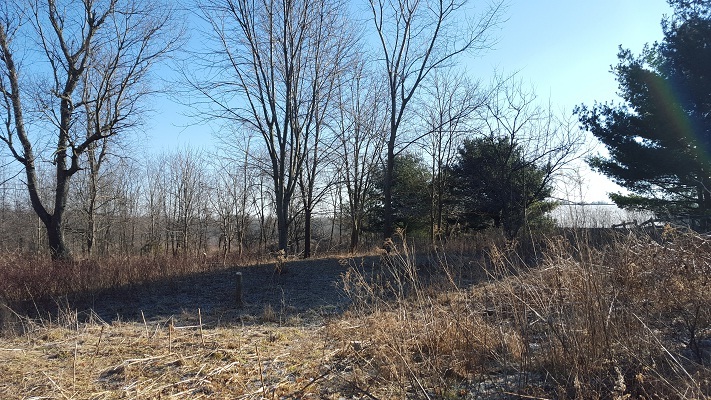Hello everyone  I made one post last year about saving the genetics of a very old apple tree on my parents’ farm, and I received so much great advice. I ended up buying apple rootstock, learning to graft, and starting a new hobby. The best part is that I’ve always dreamed of planting an apple orchard, and now that I can graft, it might be doable within my modest students’ budget.
I made one post last year about saving the genetics of a very old apple tree on my parents’ farm, and I received so much great advice. I ended up buying apple rootstock, learning to graft, and starting a new hobby. The best part is that I’ve always dreamed of planting an apple orchard, and now that I can graft, it might be doable within my modest students’ budget.
I’ve been clearing and fixing up some old overgrown pastures on my parents’ farm for years, and I’ve recently been given the go-ahead to plant some of my apple rootstocks! I’m in the middle of a semester at college right now, but in the back of my mind I’ve been planning an orchard. It’s hard to not think about it, you know? I’m sure that the people here can relate. 
I’ve reached the point where it’s time to start asking questions, and I thought that maybe I could get some advice here. I’ve been soaking up information on this forum lately (I just don’t have time to comment on anything) and I’ve got to say that the knowledge and community here is really amazing!
So here’s the scoop: Most of the farm is wet lowland. There is a corner at the top of a big north-facing slope, well above the frost pocket farther down, that probably has the best air circulation on the farm. I think it would be the best site, but a row of white pines on the neighbors’ property cast a lot of shade there. After I clear the space of the small trees, there will be about 0.5 of an acre where I could squeeze some apple trees in between the big shade trees. There are four volunteer apple seedlings growing there already, some of which I’ve practiced my grafting on, and they seem to get much less fireblight in this location than the volunteer apples in other locations on the farm. We are hit hard by fireblight every year here (I’m ordering scion wood from the most resistant apple varieties, Liberty, Goldrush, etc.)
My questions: 1) How will apples do with partial shade from the pines? They are both south and uphill of this space. We also have some white pines on our side, but they’re to the east. I want to give the pines about 40 feet of clearance before I start my row, because there’s a fence there anyway. The shade seems to move around a lot throughout the day.
-
Any advice on spacing? I’m trying to think 20 years into the future. I will be using Budagovsky 118 rootstock, so the trees should eventually get big. Because sunlight might be an issue, I’m thinking of using an old fashioned spacing of 25’ between trees in the row, and 30’ between rows. I could fit three rows in the space that way. Carol Deppe mentions in her book, The Resilient Gardener, that orchard trees spaced farther apart this way are less stressed for water in drought years. I thought that sounded like a nice idea, because ideally the trees will be there for a while, and I wonder if it would be helpful with sunlight needs as well.
-
We have a ton of deer here. They eat everything. I have been reading about how people prune their young apple trees to encourage them to grow above the deer browse line when they’re mature. I can probably find fence scraps in the barn to protect the trees at first, but I need a long term strategy. If I cut the trees back to whips for several years until they’re tall enough, will it make them too weak? How else could I go about it?
-
If I use this 30’ x 25’ spacing between trees, can I plant other things between them in the rows? I also have Geneva 11 rootstocks. If I planted one between each Bud 118, would they ultimately be crowded out, or could they possibly grow there for their productive lives? I was thinking that if a bud 118 tree grows to be ~15 feet wide and tall, then at a 25’ spacing, there should be ~10 feet of open space between the mature Bud 118 trees in the rows. I thought that maybe I could plant one of the less long-lived Geneva 11s in each of those spaces, between the Bud 118s, and then maybe honeyberries and gooseberries on either side of each Geneva 11 tree, where they’ll eventually be in the shade. (no currants or black gooseberries because of the white pines). Is that something that could work? I want to make the most of the space while the Bud 118 trees grow up, but I don’t want it to get overcrowded. I also need a place to plant the Geneva 11 rootstocks, haha.
Want to see some pictures?  I made this map so I could work around the areas shaded by mature shade trees. (The green diamonds indicate potential planting locations for apple trees)
I made this map so I could work around the areas shaded by mature shade trees. (The green diamonds indicate potential planting locations for apple trees)
The site:
One of the big seedling apples growing there. This one likes to make water sprouts apparently:




